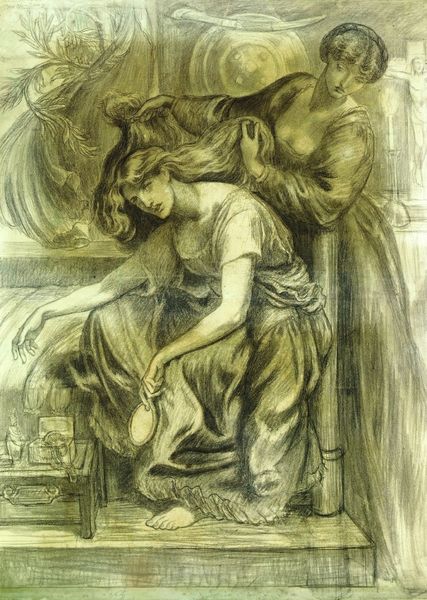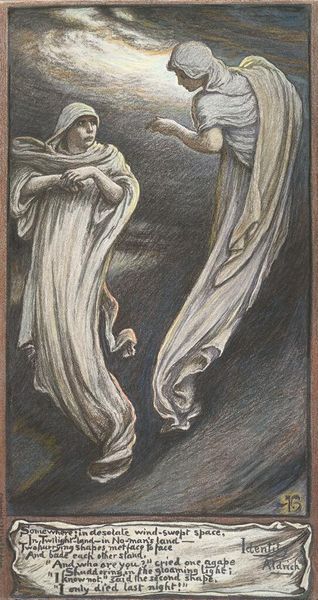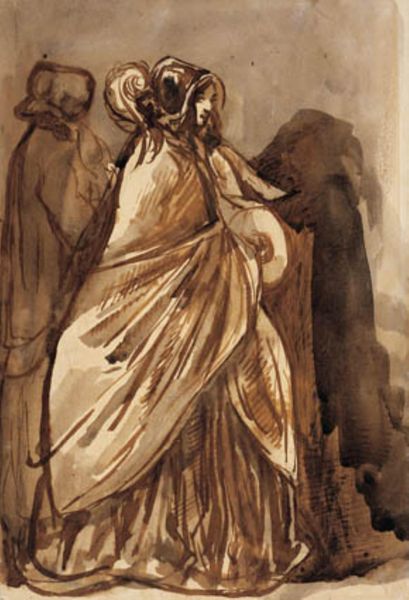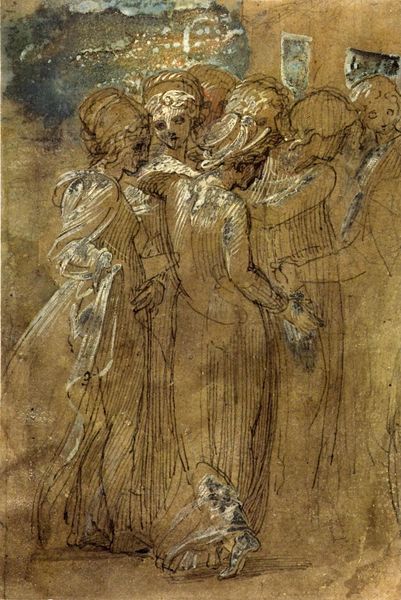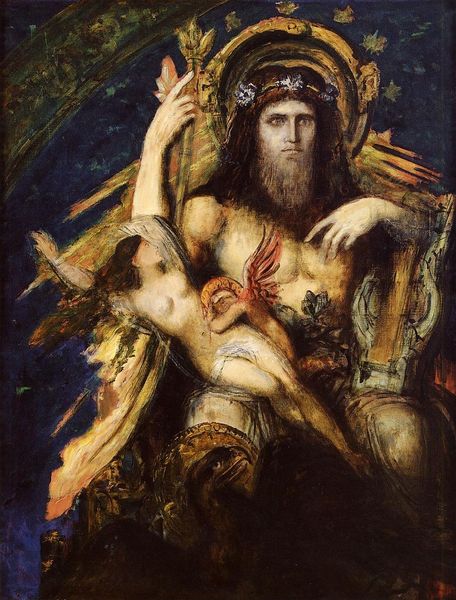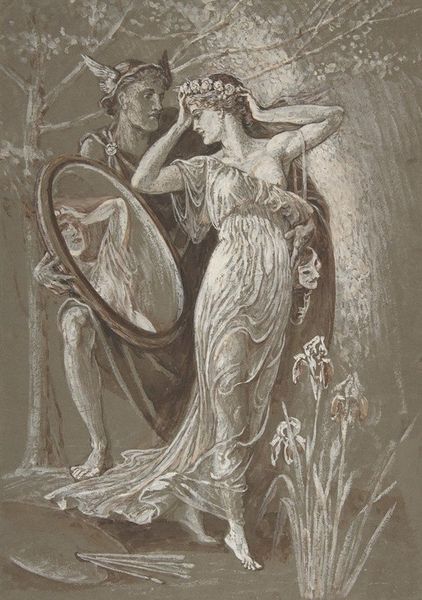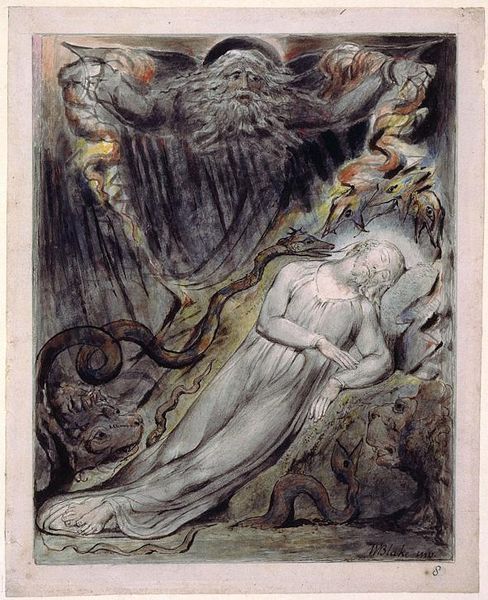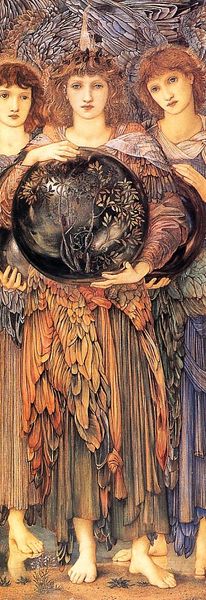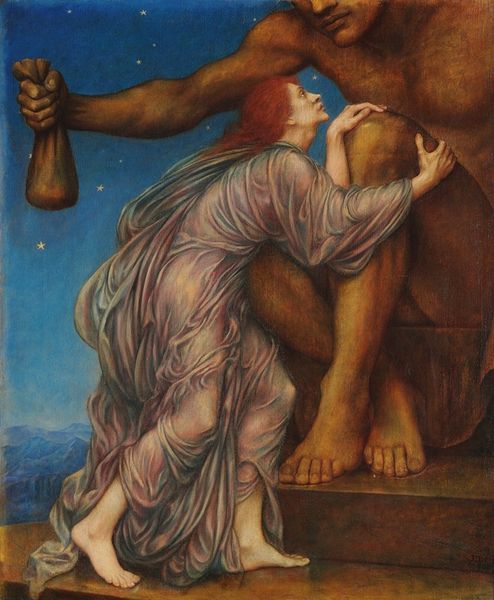
painting, oil-paint
#
portrait
#
high-renaissance
#
painting
#
oil-paint
#
figuration
#
oil painting
#
history-painting
#
italian-renaissance
Copyright: Public domain
Editor: Here we have Filippino Lippi’s oil painting *Mary Magdalene*, from around 1500. It’s really striking how the artist uses vertical lines in the architecture and figure. What stands out to you from a formalist perspective? Curator: Observe the dramatic use of chiaroscuro to sculpt the figure of Magdalene, which lends significant weight to both her physical presence and the symbolic narrative within the frame. Her downcast gaze contrasts with the luminosity of her skin and the vessel she cradles, emphasizing the interiority of her devotion. Have you noticed how the archway acts as a frame-within-a-frame? Editor: I do, it's almost like she's in a niche. And the lines of her hair mirror the lines of the architecture. I am interested in your emphasis on light, because the coloration gives me the impression that she is unwell. Curator: Precisely. Light doesn't only serve as an illuminating source; rather, its contrastive dynamics underscore both the emotional gravity and transformative power intrinsic to the scene. In purely compositional terms, would you agree the arch is the key organizer? Editor: Yes, I think it both contains and highlights the figure, guiding your eye up and down. So, it's the formal choices—light, line, framing—that really drive the emotional weight of the piece. Curator: Indeed, the strategic arrangement of visual elements, quite apart from any immediate reading, constitutes a sophisticated semiotic system. Editor: That makes so much sense. I never really looked at the painting in this manner before. I will surely employ the formalist point of view more in my research. Curator: I am certain your enhanced focus on its intrinsic elements shall offer considerable analytic enrichment to any visual art study you might encounter going forward.
Comments
No comments
Be the first to comment and join the conversation on the ultimate creative platform.
